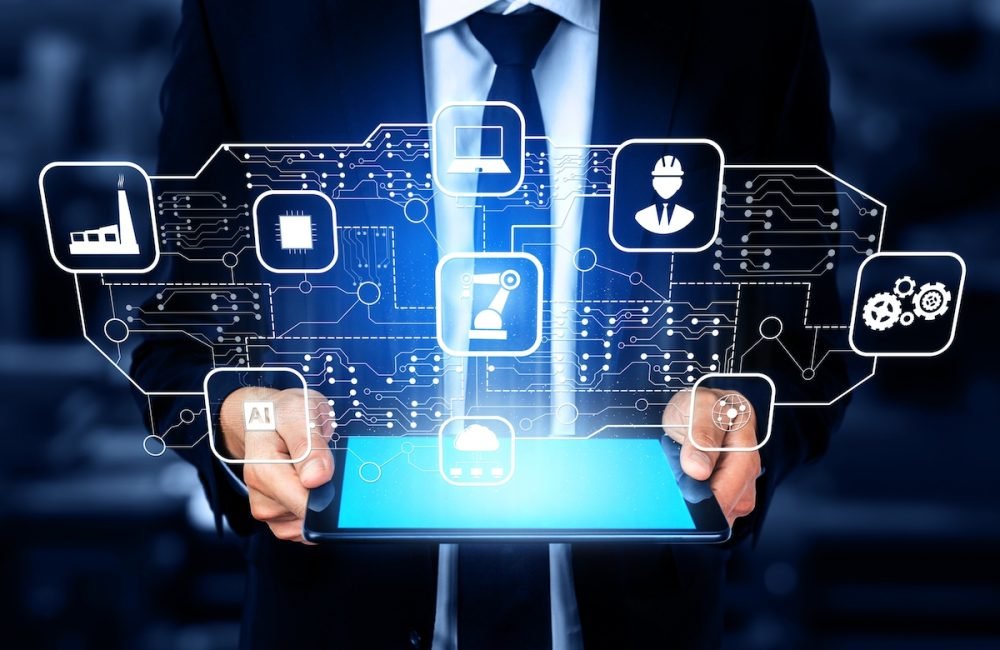Introduction
The global energy sector is at a critical juncture as it faces growing demand for renewable energy, the need for greater efficiency, and pressure to reduce environmental impact. Digital transformation is key to overcoming these challenges, and technologies like Artificial Intelligence (AI) and the Internet of Things (IoT) are playing an increasingly important role. From optimizing energy production and distribution to enhancing grid management and reducing energy waste, AI and IoT are revolutionizing the way energy is generated, managed, and consumed. These technologies enable smarter, more efficient, and more sustainable energy systems, ensuring that the world’s energy needs are met while mitigating environmental risks.
Smart Grids and AI
One of the most significant advancements in the energy sector is the development of smart grids. Traditional power grids operate in a linear fashion, transmitting energy from generation plants to consumers with minimal real-time feedback or flexibility. In contrast, smart grids use IoT devices to continuously monitor and manage energy flow, providing real-time data on electricity consumption and grid performance. AI algorithms analyze this data to optimize energy distribution, ensuring that power is delivered where it is needed most while minimizing waste.
For example, during peak energy demand, AI can predict when and where consumption will spike and automatically adjust supply to avoid blackouts. It can also identify inefficiencies in the grid, such as energy loss during transmission, and suggest solutions to improve overall system performance. This level of precision allows utility companies to reduce operational costs, improve energy reliability, and increase the integration of renewable energy sources like wind and solar.
IoT for Energy Efficiency
The IoT is transforming the way energy is consumed by enabling smart devices and systems to interact and share information. Smart meters, thermostats, and home appliances are just a few examples of IoT devices that allow consumers to monitor and control their energy usage in real-time. These devices can communicate with energy providers, enabling demand-response systems that reduce or shift electricity consumption during peak times, helping to stabilize the grid and prevent outages.
On an industrial scale, IoT devices are being deployed in factories, offices, and commercial buildings to monitor energy usage and optimize it based on real-time data. For example, sensors can detect when a machine is not in use and automatically power it down to save energy. This kind of automation reduces unnecessary energy consumption, lowers operational costs, and helps companies meet their sustainability goals.
AI in Renewable Energy
As the world transitions to cleaner energy sources, renewable energy generation faces its own set of challenges, primarily related to variability and efficiency. Solar and wind energy, while abundant, are intermittent and depend on weather conditions. This unpredictability makes it difficult to ensure a steady energy supply. AI is helping to overcome these challenges by optimizing the performance and efficiency of renewable energy systems.
In the solar energy sector, AI is used to predict weather patterns and optimize the positioning of solar panels for maximum sunlight exposure. In wind energy, AI analyzes historical wind data to adjust turbine angles and improve energy capture. Moreover, AI algorithms can predict maintenance needs for wind turbines and solar panels, reducing downtime and ensuring that energy production remains as efficient as possible.
Additionally, AI-driven energy storage systems are becoming crucial in managing the inconsistency of renewable energy. These systems store excess energy during times of low demand and release it when needed, ensuring a constant energy supply even when renewable sources are not generating power.
Predictive Analytics for Maintenance
Energy infrastructure is vast and complex, and maintaining it can be both expensive and labor-intensive. Predictive analytics, powered by AI and IoT, is helping energy companies shift from reactive to proactive maintenance strategies. IoT devices installed on turbines, transformers, and other critical components continuously monitor their condition, collecting data on factors like temperature, vibration, and pressure.
AI algorithms analyze this data to detect early signs of wear and tear, allowing operators to address issues before they lead to costly breakdowns or outages. For example, a small increase in vibration in a wind turbine could indicate a developing mechanical issue, which AI can flag for early intervention. Predictive maintenance not only extends the lifespan of equipment but also improves energy reliability and reduces downtime.
Energy Storage and AI
Energy storage technologies, such as batteries, are becoming essential for managing the variable supply of renewable energy. AI is playing a pivotal role in optimizing how energy is stored and distributed. AI-driven energy management systems can predict when energy demand will rise and when renewable energy production will peak, allowing them to efficiently manage stored energy.
For example, in solar energy plants, AI can analyze weather forecasts to determine when the sun will shine brightest and store excess energy accordingly. Similarly, AI can decide when to release stored energy to the grid during times of peak demand, reducing the reliance on fossil fuels and helping to stabilize the energy supply.
Conclusion
AI and IoT technologies are transforming the energy sector, making it smarter, more efficient, and more sustainable. From optimizing the distribution of electricity in smart grids to enhancing the efficiency of renewable energy systems and enabling predictive maintenance, these technologies are revolutionizing how energy is produced, managed, and consumed. As the demand for cleaner, more reliable energy continues to grow, AI and IoT will play an even more critical role in ensuring a sustainable energy future. The potential for innovation in this field is vast, and the ongoing integration of AI and IoT will pave the way for a more resilient and sustainable energy infrastructure.





